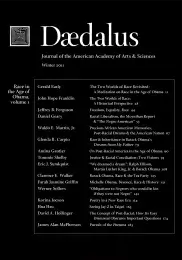“We dreamed a dream”: Ralph Ellison, Martin Luther King, Jr. & Barack Obama
In Spring 2010, a manuscript version of Ralph Ellison's unfinished second novel, Three Days before the Shooting, was finally published. Written over the course of more than forty years and running to 1,100 pages, the novel not only has a great deal to tell us about Ellison's craft and his approach to the civil rights movement; it also speaks eloquently to traditions of leadership on American race relations stretching from the days of Abraham Lincoln and Frederick Douglass through the rise of Martin Luther King, Jr., and, ultimately, Barack Obama.
When he spoke at the May 1965 conference organized by the American Academy of Arts and Sciences on the topic of “The Negro American,” Ralph Ellison found himself at odds with fellow participants. Although the proceedings took up a variety of interlocking issues–Was desegregation alone sufficient to bring about racial justice? Would true integration require racial balancing? Was the goal cultural pluralism or a surrender of black identity to the melting pot?–much of the discussion was predicated on the idea that there were “two Americas.” That concept was reinforced three years later in the 1968 Report of the National Advisory Commission on Civil Disorders, which was published the same month that Martin Luther King, Jr., was assassinated and warned that the nation was moving toward “two societies, one black and one white–separate and unequal.”1
Ellison, however, strenuously resisted the idea of two societies, two Americas–or “two worlds of race,” to borrow the title that historian John Hope Franklin chose for his contribution to the American Academy conference.2 Ellison did not deny that, by law and custom, the color line divided the nation in hundreds of ways both tragic and petty; nonetheless, he insisted that this view was myopic and counterproductive to understanding American culture, for blacks and whites alike. “One concept that I wish we would get rid of,” he argued, “is the . . .
